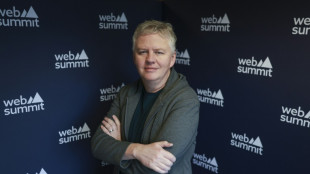
-
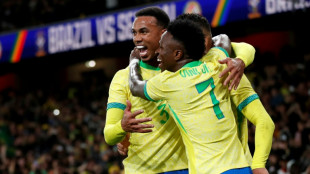 Estevao, Casemiro on target for Brazil in Senegal win
Estevao, Casemiro on target for Brazil in Senegal win
-
Ford steers England to rare win over New Zealand

-
 Massive march in Brazil marks first big UN climate protest in years
Massive march in Brazil marks first big UN climate protest in years
-
Spain rescues hundreds of exotic animals from unlicensed shelter

-
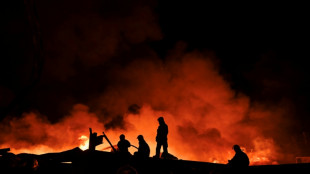 Huge fire sparked by explosions near Argentine capital 'contained'
Huge fire sparked by explosions near Argentine capital 'contained'
-
South Africa defy early red card to beat battling Italy
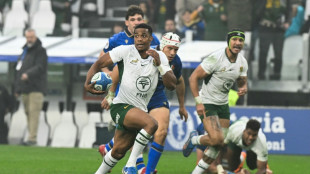
-
 Sinner beats De Minaur to reach ATP Finals title match
Sinner beats De Minaur to reach ATP Finals title match
-
Zelensky vows overhaul of Ukraine's scandal-hit energy firms

-
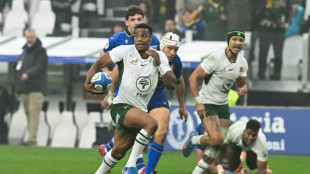 South Africa defy early red card to beat Italy
South Africa defy early red card to beat Italy
-
Alex Marquez claims Valencia MotoGP sprint victory

-
 McIlroy shares lead with Race to Dubai title in sight
McIlroy shares lead with Race to Dubai title in sight
-
Climate protesters rally in Brazil at COP30 halfway mark

-
 Spike Lee gifts pope Knicks jersey as pontiff meets film stars
Spike Lee gifts pope Knicks jersey as pontiff meets film stars
-
BBC caught in crossfire of polarised political and media landscape

-
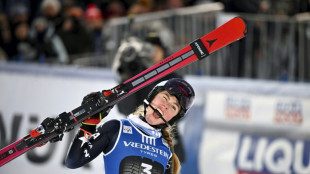 'Happy' Shiffrin dominates in Levi slalom for 102nd World Cup win
'Happy' Shiffrin dominates in Levi slalom for 102nd World Cup win
-
Palestinian national team on 'mission' for peace in Spain visit
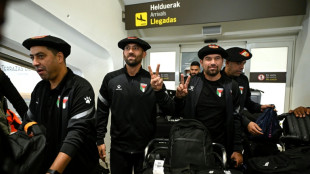
-
 Brazilian 'Superman' cheers child cancer patients in Ghana
Brazilian 'Superman' cheers child cancer patients in Ghana
-
India close in on win over South Africa after Jadeja heroics

-
 Huge explosions rock industrial area near Argentina's capital
Huge explosions rock industrial area near Argentina's capital
-
Bezzecchi takes pole for Valencia sprint and MotoGP

-
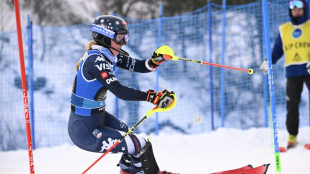 Dominant Shiffrin leads after first slalom run in Levi
Dominant Shiffrin leads after first slalom run in Levi
-
Nine killed in accidental explosion at Indian Kashmir police station
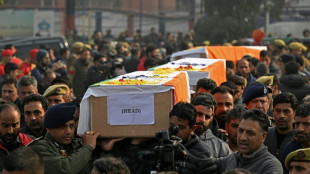
-
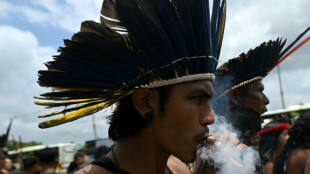 Climate protesters to rally at COP30's halfway mark
Climate protesters to rally at COP30's halfway mark
-
Fighting South Africa lose Rickelton after India 189 all out

-
 Harmer leads South Africa fightback as India 189 all out
Harmer leads South Africa fightback as India 189 all out
-
Prison looms for Brazil's Bolsonaro after court rejects his appeal
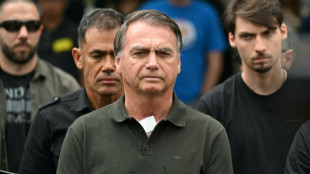
-
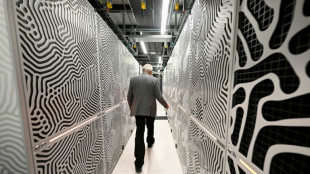 EU bows to pressure on loosening AI, privacy rules
EU bows to pressure on loosening AI, privacy rules
-
India close in on lead despite South African strikes

-
 Curry's 49 points propel Warriors in 109-108 win over Spurs
Curry's 49 points propel Warriors in 109-108 win over Spurs
-
NZ boxer Parker denies taking banned substance after failed test

-
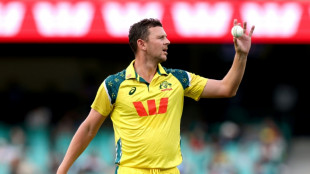 Australia setback as Hazlewood ruled out of 1st Ashes Test
Australia setback as Hazlewood ruled out of 1st Ashes Test
-
Australia pace spearhead Josh Hazlewood ruled out of 1st Ashes Test
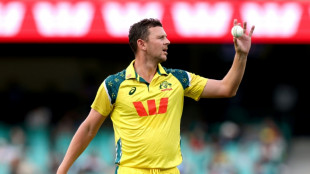
-
 UN Security Council to vote Monday on Trump Gaza plan
UN Security Council to vote Monday on Trump Gaza plan
-
Japan's Tomono leads after men's short program at Skate America
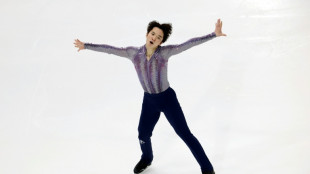
-
 China tells citizens to avoid Japan travel as Taiwan row grows
China tells citizens to avoid Japan travel as Taiwan row grows
-
Purdue Pharma to be dissolved as US judge says to approve bankruptcy
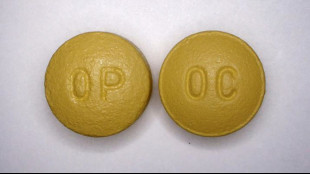
-
 Iran's first woman orchestra conductor inspires
Iran's first woman orchestra conductor inspires
-
Wood gets all-clear in boost for England

-
 Golf's world No. 8 Thomas has back surgery
Golf's world No. 8 Thomas has back surgery
-
Rebooted Harlem museum celebrates rise of Black art

-
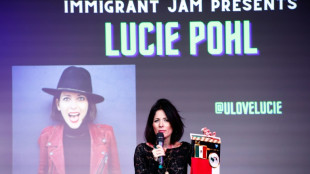 'Desperation in the air': immigrant comics skewer Trump crackdown
'Desperation in the air': immigrant comics skewer Trump crackdown
-
UN regulator says shipping still wants to decarbonize -- despite US threats

-
 Grant, Kim share halfway lead in LPGA Annika tournament
Grant, Kim share halfway lead in LPGA Annika tournament
-
Musk's Grokipedia leans on 'questionable' sources, study says

-
 Trump signs order to lower tariffs on beef, coffee, other goods
Trump signs order to lower tariffs on beef, coffee, other goods
-
Croatia qualify for 2026 World Cup, Netherlands close, Germany in limbo

-
 'Last Chance U' coach dies after shooting: US police
'Last Chance U' coach dies after shooting: US police
-
Sinner completes perfect ATP Finals group stage, Auger-Aliassime reaches last four

-
 Woltemade sends Germany past Luxembourg in World Cup qualifier
Woltemade sends Germany past Luxembourg in World Cup qualifier
-
Croatia qualify for 2026 World Cup with 3-1 win over Faroes


High-tech race to map Ukraine's damaged historic buildings
Many of Ukraine's historic monuments have been destroyed in the three months since Russia invaded, but cultural experts are working to conserve their memory using cutting-edge technology and 3D scans.
One of them is volunteer French engineer Emmanuel Durand, a specialist in 3D data acquisition, who is assisting a bevy of architects, engineers, historic building experts and a museum director to record buildings in Kyiv, Lviv, Chernigiv and Kharkiv.
Durand steps over a jumbled pile of beams and crunches over the rubble that was once Kharkiv's 19th-century fire station.
He plants his laser scanner, a sort of tripod with a pivoting head, in a strategic corner of the severely damaged building.
The redbrick fire station and its watchtower, built in 1887, are a monument to Kharkiv's industrial revolution.
Durand's gadget records the building from all angles.
"The scanner records 500,000 points per second. We'll get 10 million points from this location. Then we'll change location and go round the whole building, outside and inside. A billion points in all," he explains.
At the end of the day, Durand assembles all the data on a computer "like the pieces of a jigsaw" to digitally reconstruct the building.
The result is a perfect reproduction, accurate to within five millimetres (a fraction of an inch) that can be rotated in any direction or sliced into sections. You can even see the holes where blast waves from explosions have damaged the structure.
"This enables us to map out the building for the future. That could help us work out if anything has moved, which is important for safety purposes, and see what can be restored and what can't. It's also useful from a historical point of view," he says.
"We've got the actual missile-damaged building and an exact replica of how it used to look."
- 'Cultural genocide'-
In Kharkiv alone, around 500 buildings are listed as being of historic architectural significance. Most are in the dense historic city centre, on which Russian airstrikes are concentrated, according to architect Kateryna Kuplytska, a member of the body documenting damaged heritage sites.
She estimates that over a hundred of them have been hit already.
And while Russian troops have loosened their noose around Ukraine's second city, shells still rain down with regular monotony.
New explosions and blast waves, inclement weather, construction work and site visits will all contribute to hastening the destruction of these already weakened buildings, Kuplytska says.
"That's why it's essential to record them in accurate detail so we can plan urgent interventions that will stabilise the structures" and preserve their memory, she explains.
"Recording the destruction will also assist in criminal proceedings. We see serious damage to heritage across the whole country. It's genocide towards Ukrainian people and genocide towards Ukrainian culture," she says.
After two days at the fire station, Durand moves on to the economics faculty at the Karazin National University in Kharkiv. It is located right next to the imposing headquarters of the Ukrainian secret services, which is being targeted by the Russians and has been hit on numerous occasions.
The current iteration of the economics faculty was built in Soviet times. It was designed by Serhiy Tymoshenko, the father of the "modern Ukrainian" style of architecture of the early 20th-century, and is one of the country's first reinforced concrete structures.
Some critics suggest it is futile to document historic buildings in such meticulous detail while the war is still raging and people are dying every day.
But Tetyana Pylyptshuk, the director of the Kharkiv literary museum, begs to disagree.
"Culture is the basis of everything. If culture had developed well, people probably wouldn't be dying and there wouldn't be a war," she said.
Pylyptshuk, who also sits on the commission on damaged historical sites, has sent most of her museum collections to western Ukraine to protect them from damage -- and from looting, should Russian troops overrun Kharkiv.
"Today, everyone realises this. Maybe they were not so attentive to our cultural heritage before... but when you lose it, it hurts."
I.Saadi--SF-PST

